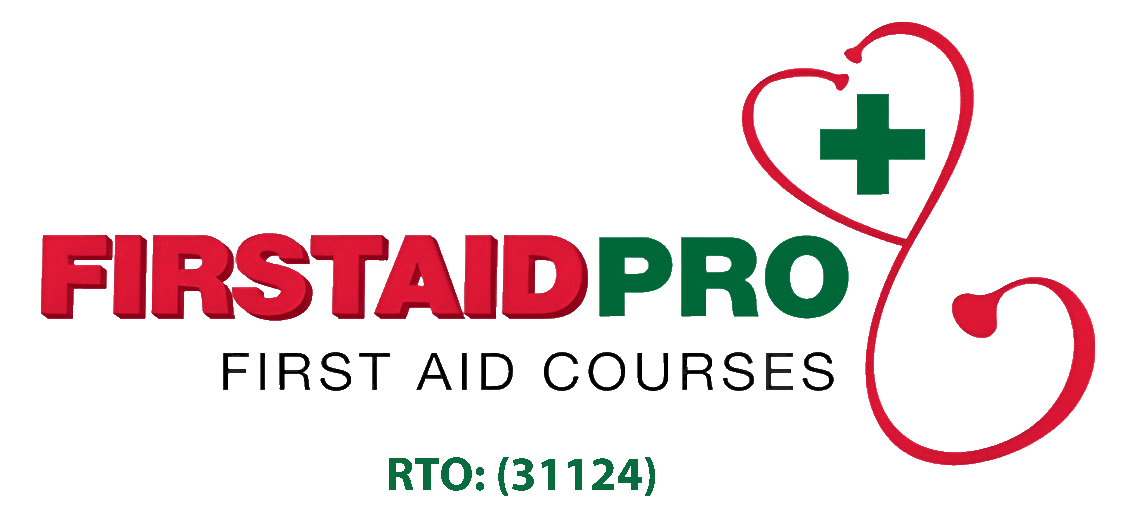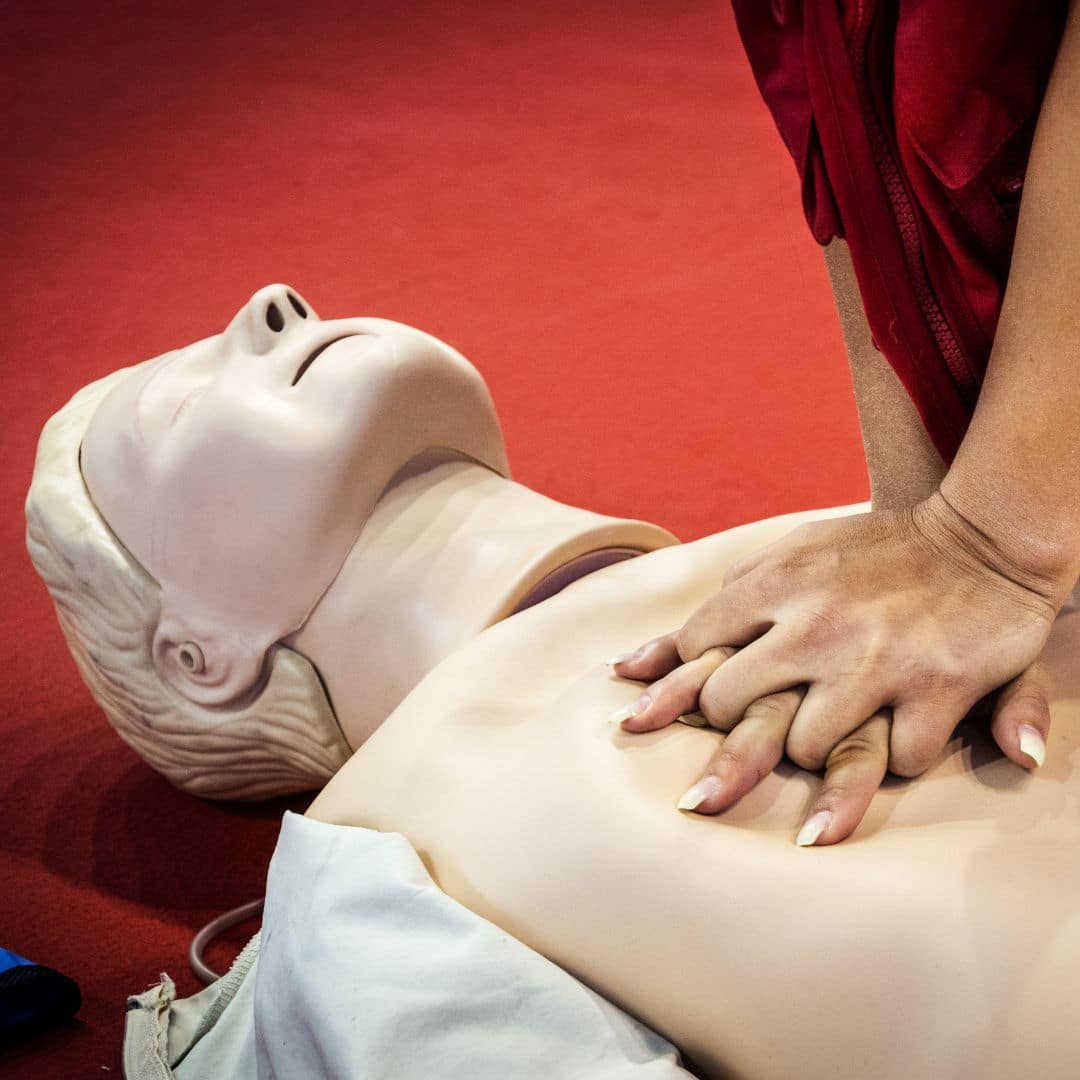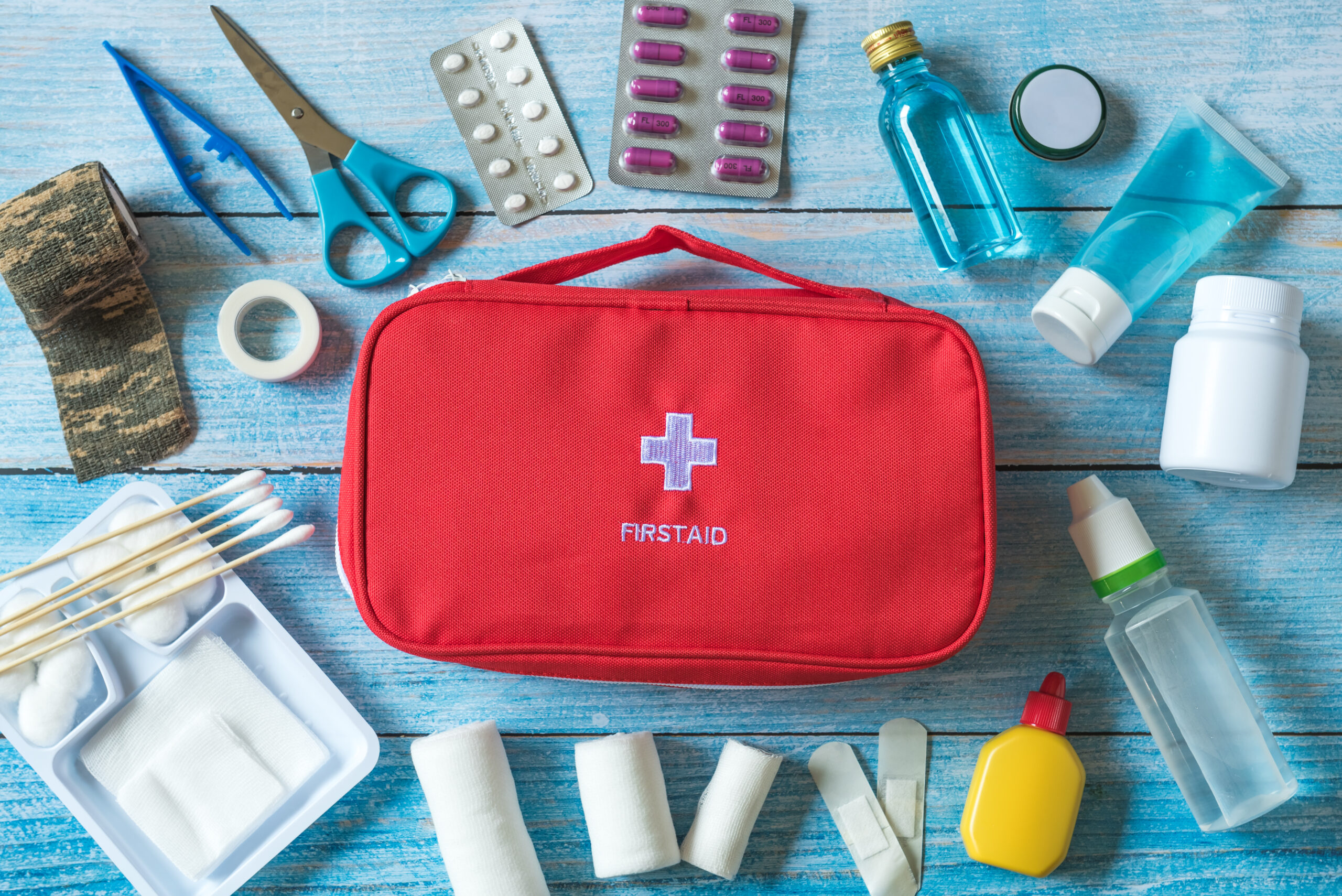This article breaks down the important differences between UETDRMP007 and UETDRMP018 for Low Voltage Rescue – LVR training in Australia.
UETDRMP018 is now the updated nationally endorsed unit for Perform rescue from a live low voltage panel, replacing UETDRMP007 under the Australian Skills Quality Authority (ASQA) framework. Electricians, apprentices, and electrical workers in Adelaide should understand how the change impacts their training requirements and workplace compliance under South Australian WHS laws.
Stay fully aligned with current national requirements. Enrol in the UETDRMP018 Perform Rescue from a Live LV Panel course with First Aid Pro today.
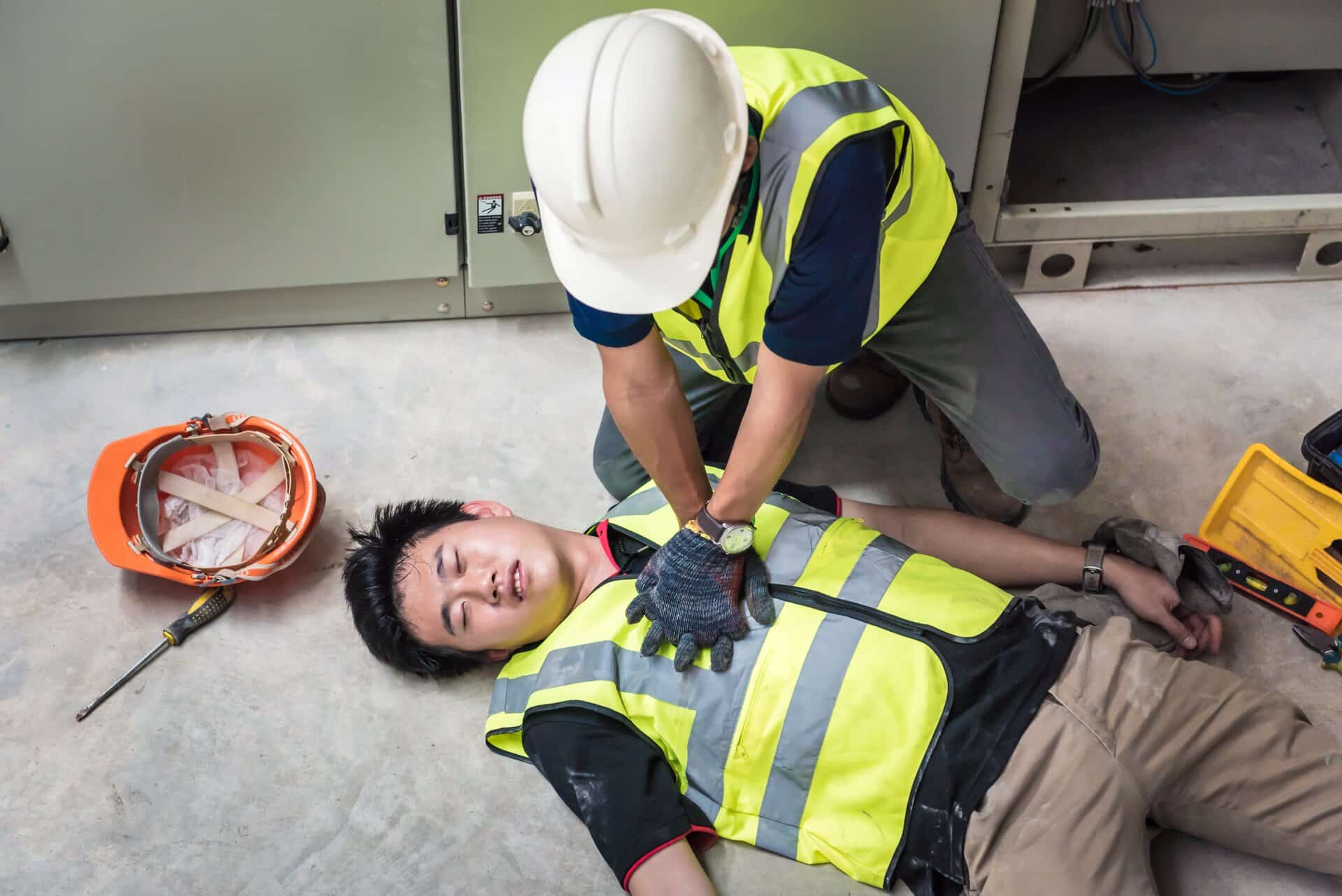
Key Takeaways
- UETDRMP018 is now the nationally recognised unit for Perform rescue from a live low voltage panel.
- UETDRMP007 remains valid until August 2026, but many Adelaide employers already prefer UETDRMP018.
- The new unit introduces updated WHS requirements, clearer prerequisites, and modernised assessment methods.
- A current CPR qualification (HLTAID009 or HLTAID011) is required before enrolment.
- Adelaide workers in electrical, utilities, construction, and maintenance sectors should transition to UETDRMP018 to stay compliant.
- LVR training teaches essential skills including hazard assessment, insulated rescue techniques, and CPR.
- Annual refreshers are standard across South Australian workplaces.
- First Aid Pro Adelaide delivers nationally recognised UETDRMP018 courses with combined CPR and same-day certificates.

Understanding Low Voltage Rescue -LVR Training in Australia
LVR training is mandatory for many workers who operate on or near energised low voltage electrical equipment. This training ensures you can safely carry out a rescue from a live electrical panel and provide immediate CPR until medical assistance arrives.
Why LVR Certification Matters
LVR (Low Voltage Rescue) certification is a critical safety requirement for anyone working with or near energised low voltage electrical installations in South Australia.
LVR in Adelaide Workplaces
Across Adelaide, many industries rely on annual Low Voltage Rescue refreshers to keep workers safe and compliant. Construction, electrical maintenance, manufacturing, and utilities organisations typically require:
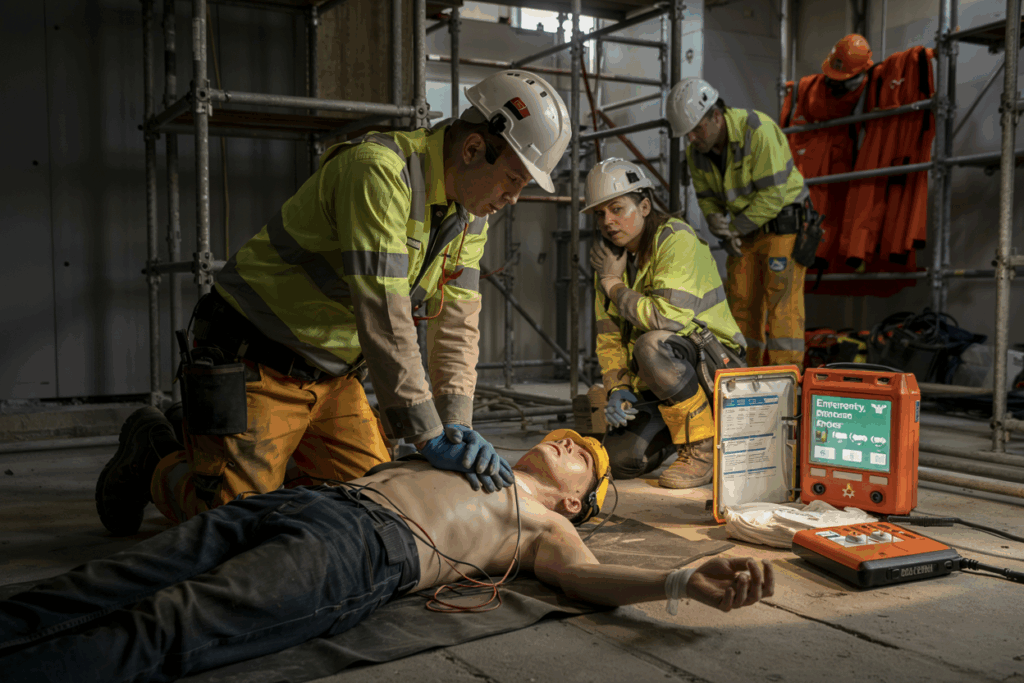
What Is UETDRMP007?
UETDRMP007 is the previous version of the Low Voltage Rescue unit, titled “Perform rescue from a live LV panel.” It has been superseded and is being phased out, with delivery permitted only until around August 2026.
What the Old Unit Covered
Why UETDRMP007 Is Being Phased Out
UETDRMP007 is being retired to ensure Low Voltage Rescue – LVR training remains aligned with modern workplace requirements and national safety expectations.
Reasons for Discontinuation
1. Updated WHS Protocols
UETDRMP018 integrates clearer workplace safety procedures, refined risk controls, and more comprehensive rescue protocols.
2. Clarified Prerequisites
The new unit clearly requires current CPR, removing uncertainty for learners and employers.
3. Modernised Assessment Conditions
UETDRMP018 includes updated assessment criteria for consistency across Registered Training Organisations (RTOs).
4. Stronger National Compliance
Regulators and employers now expect training that reflects modern legislation and technical advances in the electrical sector.
5. Transition Timeline
While UETDRMP007 remains deliverable until August 2026, only UETDRMP018 will meet training and compliance obligations beyond that date.
In short: UETDRMP007 is being phased out to ensure LVR training remains practical, current, and compliant with modern Australian WHS standards.
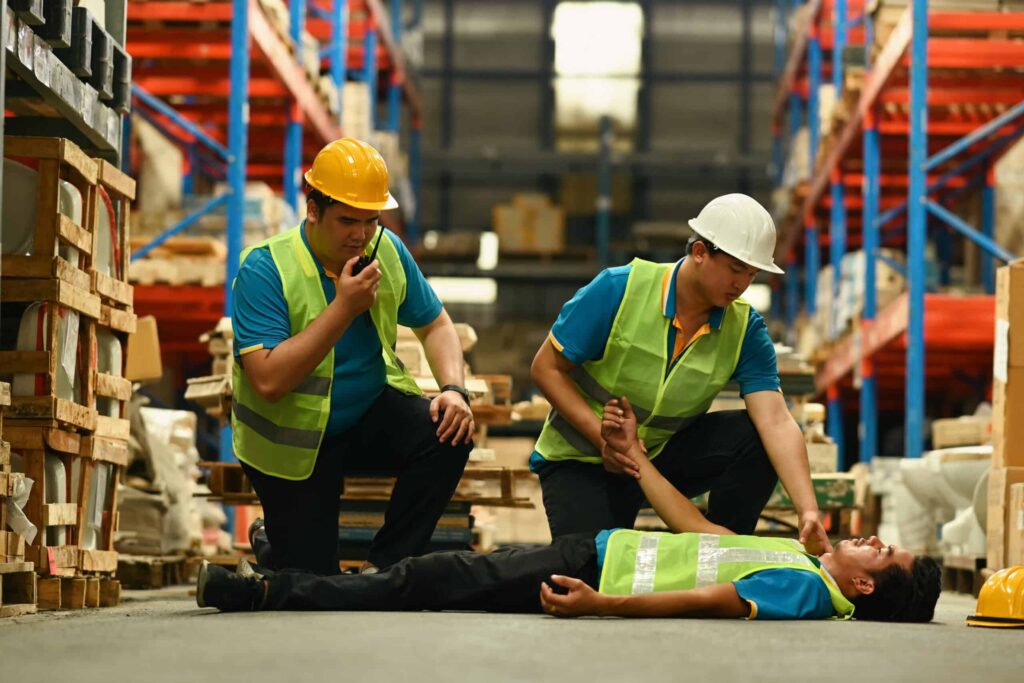
What Is UETDRMP018? (The Updated LVR Training Unit)
UETDRMP018 is the recognised national unit for Perform rescue from a live low voltage panel and now replaces UETDRMP007.
Key Components
Nationally Endorsed Competency
This unit equips workers with the knowledge and hands-on skills required to safely perform a rescue from energised LV equipment.
Core Skills Taught
- Risk assessment and hazard awareness
- Correct use of insulated equipment
- Rescue procedures using LV equipment
- CPR delivery according to ARC guidelines
- Incident management and reporting
Modernised Structure
The content reflects updated WHS legislation and industry expectations, including clearer prerequisites and stricter assessment criteria.
Who Needs This Training?
- Electricians and electrical workers
- Safety observers
- Maintenance personnel
- Workers in SA manufacturing, mining, utilities, and construction
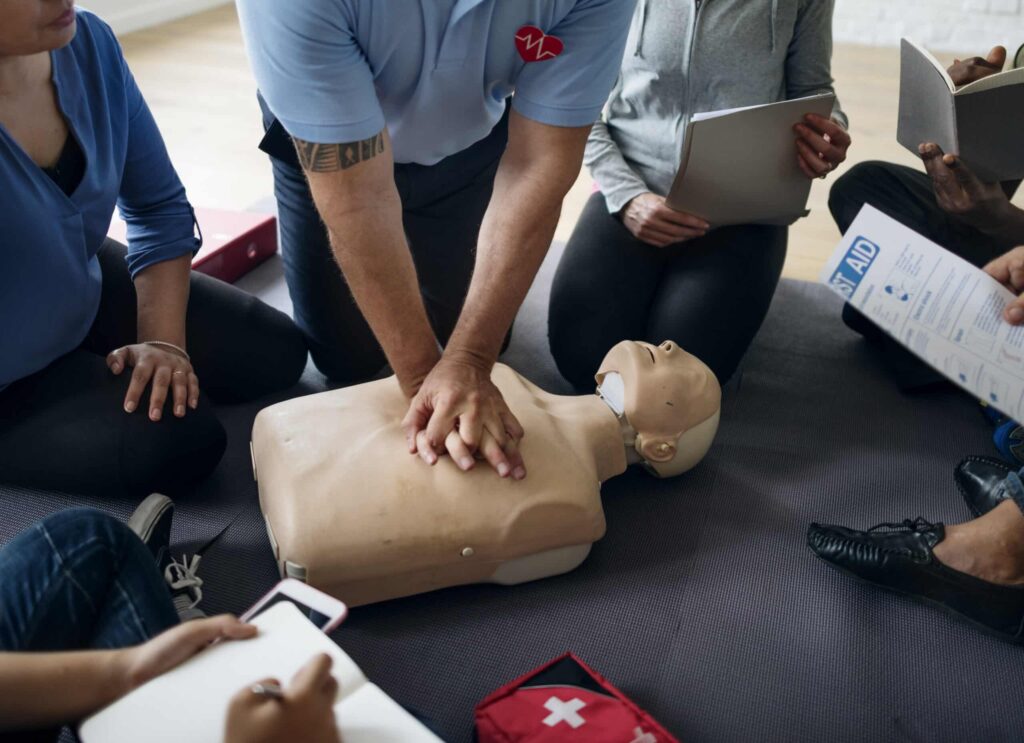
Entry Requirements
- Physical Capability
Participants must be physically able to:
- Perform CPR
- Use rescue equipment
- Respond quickly during simulations
- Literacy Requirements
Foundational English literacy and numeracy skills are needed for assessments.
Outcome
Learners receive a nationally recognised Statement of Attainment in UETDRMP018, and if completed together, the relevant CPR unit.
Comparison Table: UETDRMP007 vs UETDRMP018
Feature | UETDRMP007 | UETDRMP018 (Current) |
National Status | Superseded | Current & equivalent |
Delivery Until | Aug 2026 | Ongoing |
Prerequisite | CPR (varied) | Current CPR required |
WHS Alignment | Moderate | Enhanced WHS & compliance |
Assessment | Rescue + CPR | Updated practical + national conditions |
Industry Preference | Declining | Preferred / required |
Which Unit Do Adelaide Workplaces Accept?
Most South Australian employers now require UETDRMP018 for Low Voltage Rescue competency.
However, until August 2026, some organisations may still accept UETDRMP007 during the transition period.
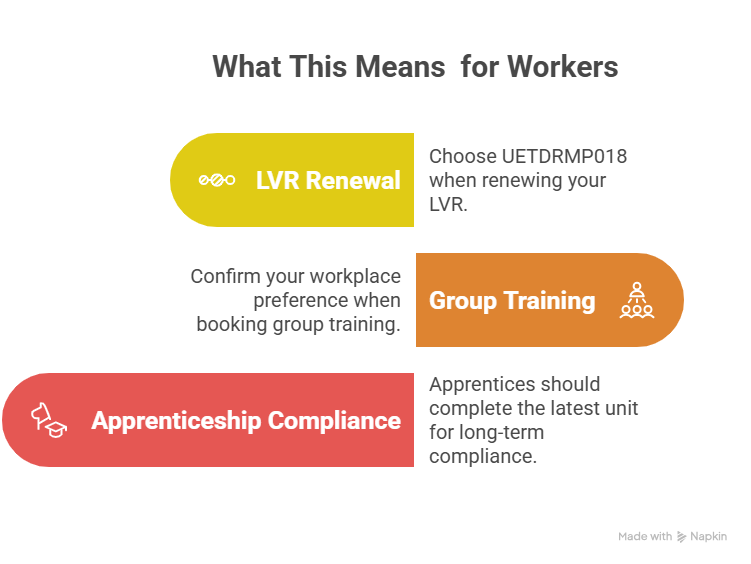
Upgrade today:
Book your UETDRMP018 LVR course in Adelaide with First Aid Pro.

What To Expect in an LVR Course in Adelaide
Your UETDRMP018 Low Voltage Rescue training is delivered through a structured combination of safety instruction, hands-on skills, CPR practice, and competency assessment. Below is a breakdown of what your training involves.
Hazard Identification & Risk Control
Use of Rescue Equipment
Performing a Safe Low Voltage Rescue
Providing CPR
Final Assessment

Knowledge Quiz: Updated Low Voltage Rescue (LVR)
Test your understanding of UETDRMP007 vs UETDRMP018 and current Low Voltage Rescue requirements in Australia.
1️⃣ Which unit is the current national standard for Low Voltage Rescue?
2️⃣ Until when can RTOs deliver UETDRMP007?
3️⃣ What is the mandatory prerequisite for UETDRMP018?
4️⃣ What does LVR training teach?
5️⃣ Which unit has updated WHS requirements?
Staying Compliant With South Australia’s Updated LVR Requirements
The transition from UETDRMP007 to UETDRMP018 represents a significant update in Australia’s electrical safety training. Although UETDRMP007 will continue during the transition period, Adelaide workers are strongly encouraged to complete UETDRMP018 to maintain compliance, meet workplace expectations, and ensure they are prepared for real electrical emergencies. The updated training offers clearer assessment conditions and modernised safety content to reflect today’s electrical industry risks.
Meet your electrical safety obligations — Enrol in the UETDRMP018 Perform Rescue from a Live LV Panel course with First Aid Pro.
References
- Training.gov.au — UETDRMP018 & UETDRMP007 competency mapping
- Australian Resuscitation Council (ARC) Guidelines
- Safework SA: Electrical Work
- SA Work Health and Safety Act 2012
- ABLIS business.gov.au: Managing Electrical Risks in the Workplace Code of Practice – South Australia
Frequently Asked Questions
Is UETDRMP007 still valid for Low Voltage Rescue in Adelaide?
Yes. UETDRMP007 remains valid during the national teach-out period. However, it has been superseded by UETDRMP018. Most Adelaide employers now prefer or require UETDRMP018 as the up-to-date standard.
Which LVR training unit should I enrol in now in Adelaide?
If you are starting or updating your LVR training, choose UETDRMP018. It is the current national unit and will remain valid beyond the retirement of UETDRMP007 in August 2026.
How often should I renew my CPR and LVR training?
Most employers—especially in electrical and high-risk industries—require annual updates for both CPR and LVR training to maintain workplace safety and compliance.
Does UETDRMP018 include hands-on rescue practice?
Absolutely. You’ll practise:
- Using an LV rescue kit
- Removing a casualty safely
- Delivering CPR on a manikin
- Managing emergencies following WHS procedures
